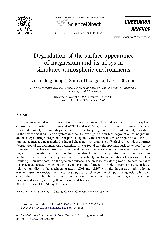摘要
An environmental simulation system was developed to simulate and control natural atmospheric environments. Purity magnesium and AZ91D and AM60 ingots were exposed to constant temperatures and humidity in a humidity chamber as well as to cycling temperature and humidity conditions in the environment simulation system in order to investigate the surface degradation of magnesium and its alloys during storage and transport. To quantify the change in surface brightness of a metal, a luminance measurement method using a light meter was established. With this method, the surface degradation of the specimens was determined. It was found that the specimen surfaces exposed to the simulated atmospheric environments became duller and the degradation process was accelerated at a higher environmental temperature or higher relative humidity. Temperature and humidity cycling led to an accelerated surface degradation process probably due to condensation of aqueous droplets, resulting in "white spots" on the specimen surface. The presence of salt fog was quite detrimental to the specimen surfaces, which made the condensation of aqueous droplets become possible at lower relative humidity on the specimen surfaces. AZ91 and AM60 with aluminium as a major alloying element were more resistant to the surface degradation than commercial purity magnesium. It is concluded that controlling humidity is a practical way of preventing rapid surface degradation of magnesium and its alloys during their storage and transport.
- 出版日期2007-3
- 单位中国空间技术研究院
